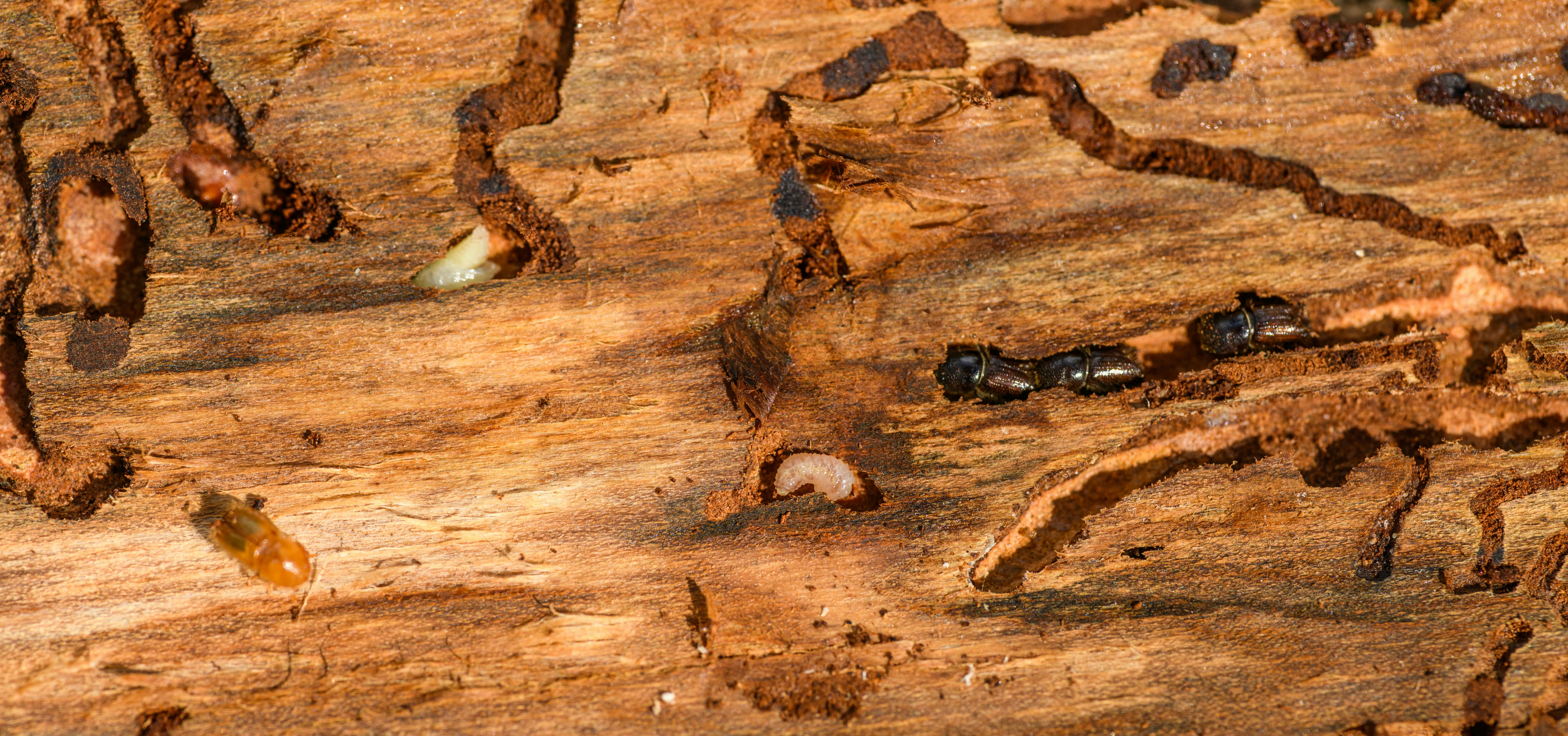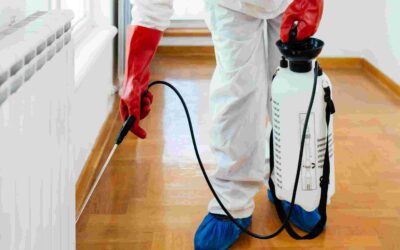
Top Signs of Termite Damage Every Homeowner Should Know
Termites are among the most destructive pests that can invade your home, often causing significant damage before their presence is detected. These silent invaders feed on cellulose found in wood, paper, and other organic materials, posing a severe threat to the structural integrity of your home. Recognizing the signs of termite damage early is essential to protect your property and avoid costly repairs. This comprehensive guide will help you identify the most common indicators of termite activity and explain what steps to take if you suspect an infestation.
What Does Termite Damage Look Like?
Termite damage often resembles general wear and tear on your home but with distinct telltale signs. From hollow wood to mud tubes and discarded wings, termites leave behind various clues. These signs can range from subtle to severe, depending on the extent of the infestation. Spotting them early can make the difference between minor repairs and extensive restoration work.
1. Hollow or Damaged Wood
One of the clearest indicators of termite damage is hollow-sounding or visibly damaged wood. Termites consume wood from the inside out, leaving only a thin outer layer intact. When you tap on wood surfaces such as walls, furniture, or floors, they may sound empty or give way under pressure. In severe cases, you might notice peeling paint or splintering wood, as termites weaken the structure from within.
How to Test for Hollow Wood
- Tap on wooden beams, walls, or floorboards with a hard object.
- Listen for a hollow or dull sound, which indicates internal damage.
- Probe suspect areas with a screwdriver to check for soft spots.
2. Mud Tubes
Mud tubes are narrow, pencil-sized tunnels that termites build to travel between their colony and food sources. These tubes protect termites from dehydration and predators, making them a crucial part of their survival. You’ll often find mud tubes near the foundation of your home, along baseboards, or inside crawl spaces.
Why Mud Tubes Matter
- They indicate the presence of subterranean termites, which are highly destructive.
- Active mud tubes contain live termites, making them a clear sign of an infestation.
- Break a section of the tube to check for termites inside; if you find them, act immediately.
3. Swarmers and Discarded Wings
Winged termites, also known as swarmers, emerge during mating season to establish new colonies. Seeing these flying insects around your home is a red flag. After mating, swarmers shed their wings, which are often found near window sills, light fixtures, or door frames.
Key Facts About Swarmers
- Swarmers typically appear in spring, especially after rainfall.
- Discarded wings are a sign that termites have successfully established a colony nearby.
- Swarmers resemble flying ants, but their straight antennae and uniform wings set them apart.
4. Buckling or Warped Floors
As termites feed on the wooden supports beneath your flooring, you may notice structural changes such as buckling, warping, or sagging. Subterranean termites, in particular, can cause significant damage to flooring and subflooring, leading to uneven surfaces or spongy spots.
Additional Signs in Flooring
- Unexplained creaking or squeaking noises.
- Loose or raised tiles caused by moisture from termite activity.
- Uneven transitions between rooms.
5. Small Holes in Drywall or Plaster
Pin-sized holes in walls can be a subtle but important indicator of termite activity. Termites create these exit holes to push out frass (their droppings) or to allow swarmers to leave the nest. These holes are often accompanied by faint lines of dirt or visible damage to the surrounding area.
6. Frass: Termite Droppings
Frass, or termite droppings, looks like tiny pellets resembling sawdust or coffee grounds. Drywood termites leave these droppings near infested wood, such as window frames, baseboards, or furniture.
Where to Look for Frass
- Around the base of walls and wooden structures.
- Near cracks, crevices, or small holes in infested areas.
- On horizontal surfaces such as floors or shelves.
7. Tight-Fitting Doors and Windows
As termites consume wood, they can cause frames around doors and windows to shift. This can make these fixtures difficult to open or close. You may also notice gaps, cracks, or damage to the surrounding wood.
Why This Happens
- The structural damage alters the shape of the frame.
- Moisture from termite activity can swell the wood, increasing friction.
- Over time, these areas become entry points for additional pests.
Why Is Early Detection of Termite Damage Important?
Early detection is critical for preventing extensive damage to your home. Termites can remain hidden for years, causing severe structural issues by the time they’re discovered. An untreated infestation can compromise your home’s safety and lead to expensive repairs. Annual termite inspections by professionals can identify infestations before they escalate, saving you time and money.
How to Protect Your Home from Termites
Termites are persistent pests, but there are steps you can take to reduce the likelihood of an infestation. Prevention and proactive measures are the most effective ways to protect your home.
Preventive Measures:
- Maintain Proper Ventilation: Keep basements and crawl spaces dry by using dehumidifiers or ventilation systems.
- Fix Leaks: Address plumbing issues and roof leaks promptly to reduce moisture that attracts termites.
- Seal Entry Points: Use caulk or weather stripping to close gaps around windows, doors, and utility lines.
- Eliminate Wood-to-Soil Contact: Store firewood off the ground and away from your home’s foundation.
Professional Treatment Options:
- Chemical barriers that prevent termite entry.
- Baiting systems to eliminate active colonies.
- Routine inspections to detect early signs of infestation.
FAQs About Termite Damage
How long does it take for termites to cause damage?
A large colony can cause significant damage in just six months, though smaller infestations may take longer to become noticeable.
Can termite damage be repaired?
Yes, but repairs should only be done after the infestation is eradicated. Structural damage may require professional restoration.
Are termites active all year?
While termites are more active in warmer months, they remain a threat year-round, especially in climates with mild winters
Protect Your Home with Expert Pest Control
Recognizing the signs of termite damage early can save you thousands of dollars in repairs and protect your home from further destruction. If you suspect an infestation, don’t delay in seeking professional help. West Termite & Pest provides comprehensive termite control, pest control, and lawn care services across Arkansas and Oklahoma. Our team of experts offers free consultations to help you identify and resolve pest issues quickly and efficiently. Contact us today to keep your home termite-free year-round!
Call your local West Termite location or fill out the form
on our contact page to schedule your inspection today!
More posts from West Termite, Pest & Lawn
Top 5 Spring Pests in Arkansas and How to Keep Them Out
Looking to protect your home this spring? Pest season in Arkansas starts as early as March, and if you’re not prepared, you could find yourself sharing your space with ants, termites, mosquitoes, spiders, or wasps. In this guide, we will cover the top five spring...
Spring Into Action: Preventing Termite Infestations in Arkansas Homes
Termite infestations are a serious concern for homeowners in Arkansas, especially during the spring when these pests become most active. Preventing termite infestations early can save you from expensive structural damage and long-term headaches. Termites thrive in the...
Early Spring Lawn Care Tips: How to Keep Your Arkansas Yard Healthy
A healthy lawn starts in early spring. If you want lush, green grass by summer, the groundwork begins as the weather warms and the soil softens. The right early spring lawn care routine is essential for homes in Arkansas, where fluctuating temperatures and humidity...



